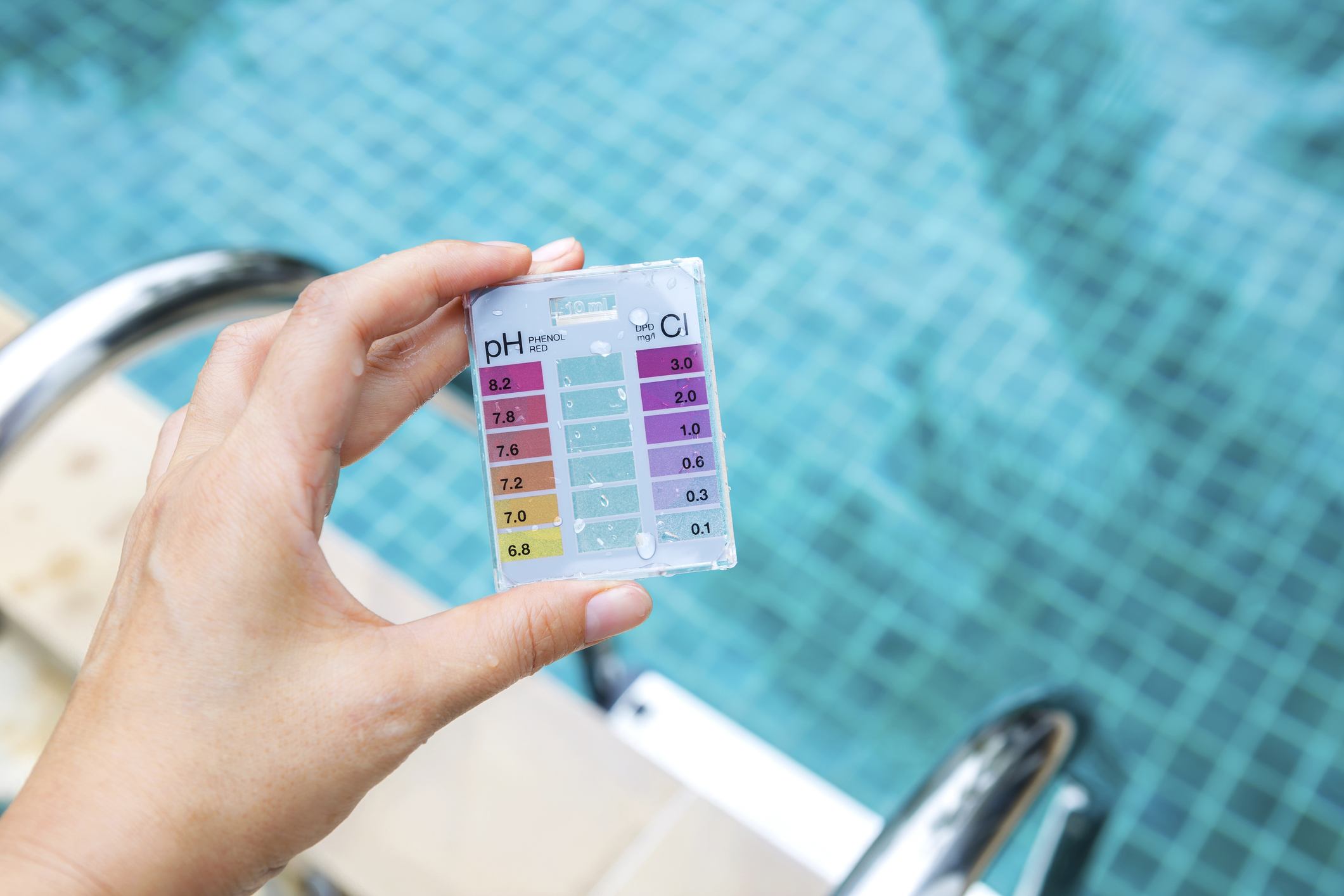Preparing Your Swimming Pool For Spring - 7 Steps

It’s almost that time of year again. If you’re already dreaming about lazy days by the pool, we’ve got your back. Check out our comprehensive list for getting your pool ready for use this spring.
1. Clean Your Pool Cover
The winter months bring with them storms, snow and ice, so it’s likely your cover is in need of a good cleaning. Cleaning a swimming pool cover is important to ensure its longevity and keep the pool clean. While the cleaning process depends on the type of cover, you should start by removing debris such as dead leaves and twigs from your cover and then use a pump to drain all the water off of it.
For solar pool covers, start by removing debris, then wash with a hose, scrub gently, wash with mild detergent, and rinse thoroughly to keep the cover away from UV rays.
For mesh covers and standard safety covers, clean with a mild detergent or pool cover cleaner, rinse thoroughly, dry in the sun, and store in a bag or container.
For automatic safety covers, remove standing water, remove dirt and debris with a soft pool brush or broom, and clean rotating surfaces with a hose nozzle every three months. Proper care can extend the life of a pool cover for up to 20 years.
2. Inspect The Pool
Look your pool over before moving on to any other steps. This is the perfect time to look for cracks and other signs of disrepair. You should also make sure the pump, plugs, connections and skimmer baskets are in good shape.
When inspecting your pool, you should look for any cracks or damages in the pool's interior and exterior, such as the vinyl liner and tile. Check the pool's safety features, such as handrails, ladders, and gate height and distance.
Inspect the functionality of the pool pump and equipment, including the filter casings, motors, pumps, heater, light fixtures, wires, safety controls, and GFIs. It is also essential to check the water levels and chemistry.
If you are unsure how to inspect your pool, it is recommended to hire a certified pool inspector who can provide a thorough inspection report and advise on any necessary repairs or replacements.
Deal with any and all problems before turning on your filtration system.
3. Reconnect Pool Equipment
Once your inspection and any necessary repairs are complete, it’s time to reconnect equipment that you removed for the winter such as the pool filter, pump, heater and automatic pool cleaner.
You can also re-install ladders and other such accessories and replace all winter plugs with your regular drain plugs. Now is also the time to re-attach any hoses that were removed.
4. Ready Filtration System
Next, check to be sure no air is in the plumbing lines. If you suspect there is air present, it’s a good idea to have a professional blow out the lines.
This job requires quite a bit of know-how, so we recommend hiring an expert to handle it for you. Once this is done, it’s time to turn on your filtration system.
5. Test and Treat Water
After topping up your levels to the normal height for your pool, let the water sit for eight hours before testing. When it’s time to evaluate the water, use test strips or a test kit to test pH levels as well as the water’s total alkalinity, it’s chlorine and calcium levels and hardness.
Follow manufacturer instructions when measuring and mixing your chemicals and add them as needed to achieve balanced water.
To test your pool water, you can follow these steps:
- Wash and dry your hands before taking a test strip out of the packaging.
- If you are using test strips, dip one test strip into the water and remove it, making sure to hold it level with the test dots facing up.
- For liquid test kits, use the clean, empty testing container included in the kit and fill it with the recommended amount of water sample.
- Add the appropriate reagents to the water sample according to the instructions on the kit.
- Wait for the indicated amount of time for the results to appear.
- Compare the color of the test strip or sample against the provided color chart to determine the levels of total and free chlorine, pH, alkalinity, cyanuric acid, calcium hardness, phosphates, copper, and salt, if applicable.
- Make necessary adjustments to the pool water chemistry based on the results.
Remember to test your pool water at least weekly and after rainstorms, adding water, or noticing cloudy water or discoloration, to maintain proper levels of chlorine, alkalinity, pH, cyanuric acid, and calcium hardness
6. Clean Up
It’s a good idea to give your pool a quick clean by brushing down the walls and then vacuuming. This will get rid of any algae or bacteria that formed over the winter. Allow your filtration system to deal with any excess algae overnight.
7. Shock Your Pool
After allowing the filtration system to do its work, it’s time to shock your pool, using two pounds of shock for every 10,000 gallons of water.
Run the circulation system for a few hours and then add an algae prevention treatment to the water. This will ensure a good and clean start to your swimming season.
Pool Brite
As Amherst’s top pool supply store, Pool Brite has everything you need to open your pool for spring from pool accessories to parts.
If you’re not a pool owner yet, but you want to be, visit our Amherst showroom to see the many great above-ground swimming pools and in-ground models for sale.